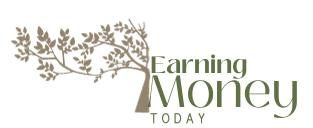How To Live Debt-Free
We all know that some debt may be necessary for business and life, but how we minimize that debt is most important. There are two types of debts; one — a personal debt — can be burdensome and bad, the other is a type of debt that can be beneficial to your business. Identifying the two types of debt, bad debt versus good debt, is essential to understand.
Bad Debts To Avoid
Examples of bad debts could be credit cards, payday loans, other personal loans with high APR (Annual Percentage Rates), and any type of debt where you pay way more than the loan principal.
- Credit Cards: Credit Cards are one of the primary drivers of debt and financial challenges. Access to easy credit can be beneficial for emergencies. Still, the problem for most people is that they use their credit cards to make impulse or unnecessary purchases and only pay the minimum payment every month. If you were paying the minimum on the credit balance every month, it would take you up to 10+ years to pay back the principal and get the debts fully paid.
- Personal Loans: Personal loans can be a lifeline for homeowners, but depending on your credit score and the source of the originator of your loan, you could end up paying massive amounts, much like a credit card.
- Payday Loans: One of the worst types of personal debt is payday loans. With a payday loan, you get money loaned upfront that uses your paycheck as future collateral. The problem with payday loans is that while they’re short-term fixes, they come with fees and APR that require the borrower to pay back more than they earn for the period and are often considered predatory.
Types Of Good Debt
While the previous examples are of harmful types of debt, there are some excellent forms of debt. So what’s the difference between good debt versus bad debt? Basically, good debt is one that you can benefit from and helps make your financial life a little less worrisome. An example of this type of debt is low-interest loans that help you pay off the balance of unwanted and burdensome high-interest credit card debt or other loans.
- Educational Loans: A long-term type of good debt is what you take on to better your position through education. A small college loan, for example, can help boost your potential earnings based on education. Still, too much of a student loan can anchor you down and be difficult to pay off over time, so taking a minimal amount is recommended.
- Business Loans And Subscriptions: Another form of good debt is to pay for a subscription service or retainer for your business. This type of debt you pay forward and can access the services and goods when needed.
- An excellent example of this form is paying for HVAC services for your restaurant or outsourcing different department needs for your business, such as having a managed print service or bookkeeping service on retainer.
- Mortgages: Another form of good debt is a home mortgage. With a home mortgage, you take on the obligation of the loan minus any down payments and pay down the principal over the life of the mortgage. Thus, your home appreciates while your debt diminishes over time, creating equity (wealth) that you acquire.
Through purchasing real estate, you have the option to buy and hold to sell over time, buy and sell such as a flip for a quick profit, or to buy and hold to rent out to make some long-term revenue opportunities. The added benefit here is leveraging the loan (mortgage) to make you revenue in the long haul.
Leveraging is a term used to describe an action where you take a loan, here the mortgage, and use it to create wealth for yourself or your business. In other words, you’re using someone else’s money (the bank) to make you more money than the debt in the process.
Regardless of the type of (potential) good debt, too much debt can have harmful effects if it becomes unmanageable. In addition, finding ways to manage your debt and stay motivated in the process of paying it off can be challenging without proper organization, budgeting, and planning. Creating a plan, sticking to it, paying off the highest interest rates first, but in general, avoiding most forms of debts as much as possible is an excellent way to live a happy, financially healthy life.


